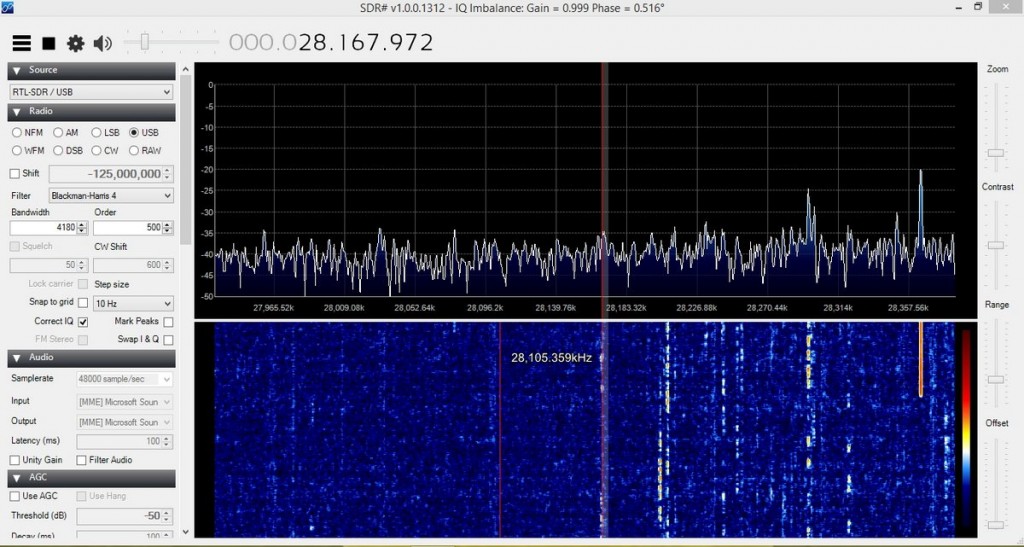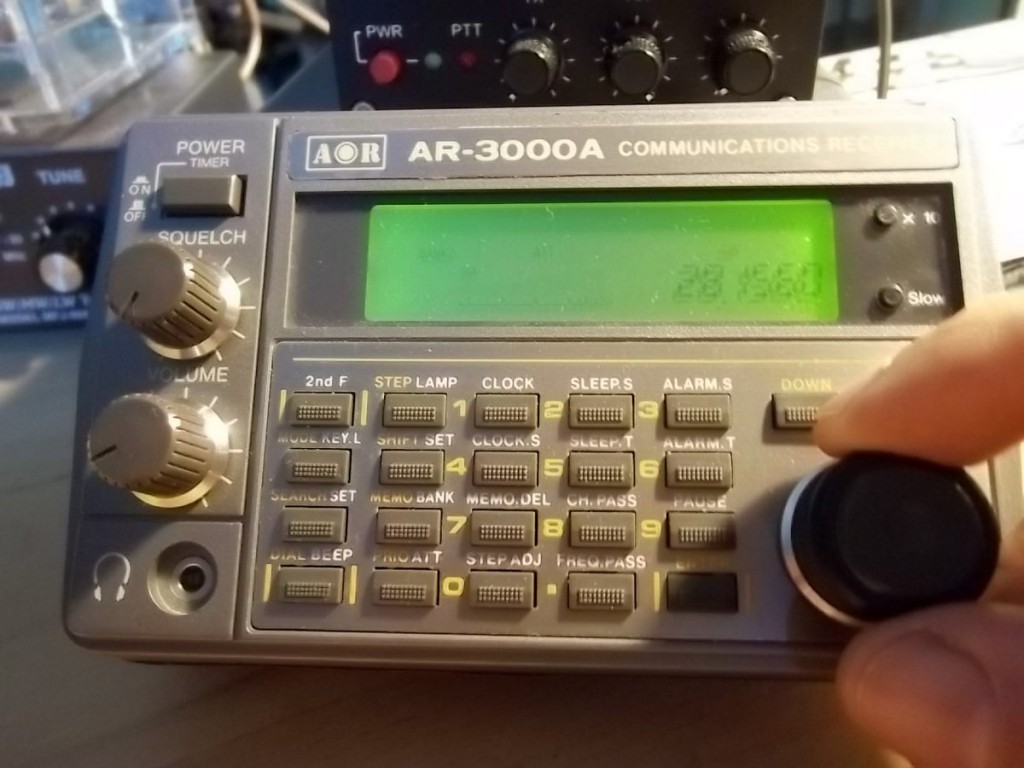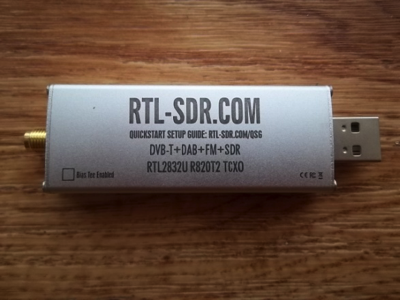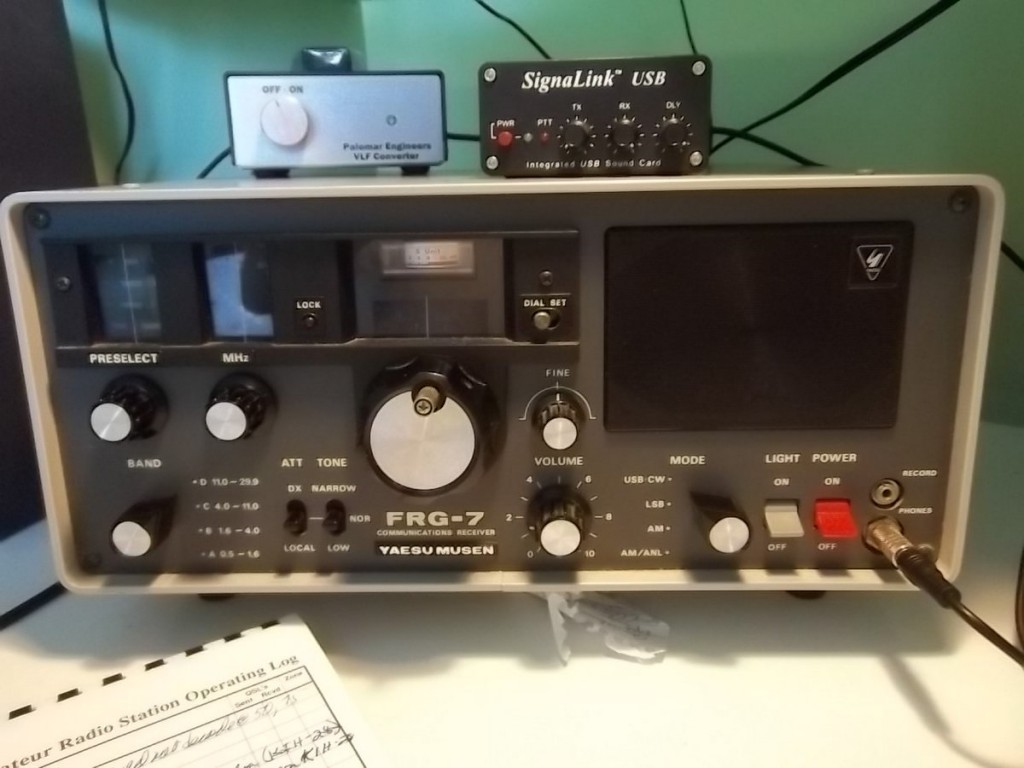 Many thanks to SWLing Post contributor, Mario Filippi (N2HUN) for the following guest post:
Many thanks to SWLing Post contributor, Mario Filippi (N2HUN) for the following guest post:
Listening in to 10 Meter Radio Beacons
Mario Filippi, N2HUN
(All photos courtesy of author–click to enlarge.)
Radio beacons can be found across the RF spectrum from the LF (low frequency) band all the way up to bands inhabited by satellite signals. If you are a ham, shortwave listener or a QRP (low power) buff then a great place to start is on the 10 meter band, which is included on most table-top shortwave radios and even some portables. Beacon signals come and go with band conditions, emanate from different parts of the globe and provide one with listening challenges and hours of fun. So let’s talk about 10m as it’s a good place to start.
A good indicator of band conditions on 10m is via the 10m beacon band which ranges from 28.1 to around 28.3 MHz. In general, most stateside beacons are found from 28.2 – 28.3 MHz while DX (ex-US) beacons are heard from 28.1 – 28.2 MHz. However, I’ve heard DX beacons as high up as 28.297 MHz. These stations provide hams and SWLs not only with code practice but with the adventure of hearing low power signals from around the globe. To get acquainted with what is on the air, check out the Ten-Ten International Net website which has one of best lists of beacons, along with a plethora of information on the band itself: http://www.ten-ten.org/index.php/resources/ten-meter-beacons . The Ten-Ten club has been around for many decades and is a good resource of information on 10 meters in general; one can even be issued a unique Ten-Ten ID number upon request. Then, when making 10m contacts you can exchange Ten-Ten numbers with fellow operators.
Many of these beacon stations have been logged over the years at this QTH simply because they dot the globe with their low powered one-way signals and are a challenge. Hearing a beacons’ very weak CW signal fading in and out with its’ short message, usually starting with a series of “Vs” followed by the call, then by info such as location, wattage, grid square is a timeless source of pleasure. There are literally hundreds of beacons to hear using your shortwave or ham radio, all coming in at different times of the day from places far and near. And there’s no need to be in the shack; check them out using a portable radio because when band conditions are favorable, you’re bound to hear them. And for those of you with RTL-SDR dongles, these miniscule radios are perfectly capable of receiving beacons and have the added feature of “looking” at that portion of the spectrum both via the 2-MHz wide spectrum display and accompanying waterfall image. These dongles are an inexpensive entry into HF/VHF/UHF listening and cover all modes. However they are not a plug ‘n play venture, you’ll need a computer, driver program, software to turn the dongle into an operating wideband receiver, patience learning the software, and a good antenna.

Screenshot of 10m beacon activity in right-half of waterfall on 6/22/15; VA3KAH was heard on 28.168 MHz.
Most 10m beacons operate at low power, anywhere from 100mW to as high as 100W but generally operate in the 1 – 5W range using a variety of antennas, the vertical being the most popular. So in essence these beacons are not what you would classify as“big guns” and that’s the beauty of it all. They are an intriguing and challenging quarry to write into your logbook! While 10m tends to be more active during daylight hours and when sunspot numbers are good, this doesn’t mean that beacons will not be heard; a quick “sweep” of 21.1 – 28.3 MHz while you are in the shack or outside listening on a portable is always worth a check. Having a good pair of headphones will aid in hearing the weak ones.
To give readers some inspiration, below are some recent morning loggings using an AR-3000A and a 43 foot S9 vertical antenna. Band conditions were not the greatest, with most beacon stations fading in an out and propagation favoring Europe. Using a pair of headphones, logbook and pencil at the ready, it required sitting on some frequencies a few minutes as the beacon of interest faded in an out, until all the information was logged. Most beacons will begin their transmission with a series of “Vs” which helps to identify an active frequency. Some will send a long tone out first, allowing you to fine tune the station, while some start with a series of “dits” to get your attention. As you log these beacons you’ll see that each has its’ own agenda. For example, some only send their call sign. Others will send call sign, grid square, and power. Some even include a website or an address to send QSL information. If your code is rusty, no worries as most beacons send their call at least twice or thrice!
Recent 10m Beacon Loggings de N2HUN
| Date | Time (GMT) | Frequency | Call | QTH | Comments |
| 2/14/16 | 1423 | 28.166 | XE2O/B | Allende, Mexico | 5W, EL05 (grid square), some QSB |
| 2/14/16 | 1440 | 28.298 | SK7GH | Jonkoping, Sweden | Very weak, heavy QSB, 5W |
| 2/14/16 | 1447 | 28.223 | KP3FT/B | Ponce, PR | Series of five “dits” precedes CW identification |
| 2/14/16 | 1455 | 28.205 | DL0IGI | Hohenpeissenberg, Germany | Long tone precedes CW identification, 48W |
| 2/14/16 | 1500 | 28.173 | IZ1EPM | Chivasso, Italy | Long tone before and after transmission, 20W |
| 2/14/16 | 1530 | 28.242 | IZ8DXB | Naples, Italy | Tone preceding transmission, JN70BU (grid square), 6W |
My thanks go out to the Ten-Ten International Net (www.ten-ten.org ) for their excellent website covering the 10 meter band and to all those ham operators worldwide who took the time and energy to construct radio beacons for all of us to enjoy. Now, go forth and check out those beacons; don’t assume the band is dead, check out the beacon section of the band which will give you an indication of propagation conditions. Ten meters is very capricious and can open up at any time of the day, even late at night. And don’t forget to QSL the beacon operator! Good luck hunting down beacons and 73’s!
Thank you so much for this, Mario! Check out Mario’s other excellent guest posts by clicking here.




ncdaddy [email protected]
Cool read thanks for listing to us on the 10 meter band. Hope you hear me KJ4VYI/B at 28.278.9 running 1 watt at the moment to a solacon a99 vert at 30-40 ft
Will do Chad, 4 land beacons are heard up here commonly during openings, will keep an ear out for you, and thanks for setting up your beacon.
Another tip, you can check the 10m FM band with repeaters found from 29.6 – 29.7 MHz using FM to communicate around the world when the band is open. It’s fun just to log distant repeaters when they ID in CW.
You might even find that you have a local 10m FM repeater which is is daily use for local communications.
…aware… sorry for the typo.
Indeed, thanks for the post, I wasn´t able of the Ten Ten group before! Great resource!
Great information, as always, Mario. Thanks too for the reminder that 10 meters has beacons almost any time of day, even in spite of the “sun spot cycle”! I was interested to see you are a fan of the FRG-7, as am I. Just purchased my first one last year and really, really enjoy it. I will be checking out the Ten-Ten site — sounds like a great resource!
Cheers!
If there is ever a “Hall of Fame” for SW radios the FRG-7 certainly deserves consideration. Thanks Robert.
Yep, on 10M beacons. They are handy. So is listening to CB 27MHz skip. However, one big high HF beacon is WWV at 25.0000MHz even. I even used that to retune a Kenwood TS-2000X rig’s TXCO. (Good to know if you also have one of those rigs that’s off FREQ right from the factory.) For once, our tax $$$$$ at work that I can agree with.
Don’t forget the International Beacon project. A network of synchronised time sharing beacons arround the world. Operating on bands from 14MHZ to 28MHz
Google “ncdxf IBP” for details.
73.
Beacons are good for far more than propagation tests. One of their early usages was to provide known frequencies, especially in the VHF/UHF range.
I did quite some tests with my local beacon DL0IGI. At http://www.dl4no.de/thema/a-10m.htm you even find a DL0IGI QSL card. The beacon is on the tower you see on the foto.
At the bottom of http://www.dl4no.de/beispiel/betrieba.htm there is a diagram I made using a route guidance system and an audio recorder: On top you see the height profile of a stretch of Autobahn and at the bottom the received amplitude of DL0IGI with AGC disabled. The surprising effect is the signal maximum at half height.
If you wish to evaluate this effect click on the Google Maps link to the left: During the recording I drove from north to south. At half height the Autobahn runs across a bridge – you can see it in satellite view. There the western side drops down some 50 m which means hardly any ground effect for my antenna. DL0IGI is more than 100 km to the SSW.
BTW: As far as I know the tower with DL0IGI was built as a partner of the Olympic Tower for the 1972 Olympics in Munich. They were needed to feed the TV signals to the sat station at Raisting, see https://de.wikipedia.org/wiki/Erdfunkstelle_Raisting. Another communication technology mostly gone…
Interesting bit of info on the tower, thanks!
The K6FRC beacon on 28.3 @100watts is one of
the easiest to hear.
It’s always been a shame to see great 10m band
openings come and go without anyone to work
them.